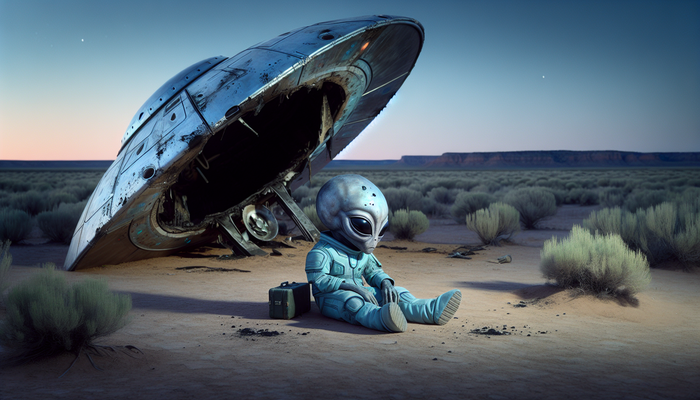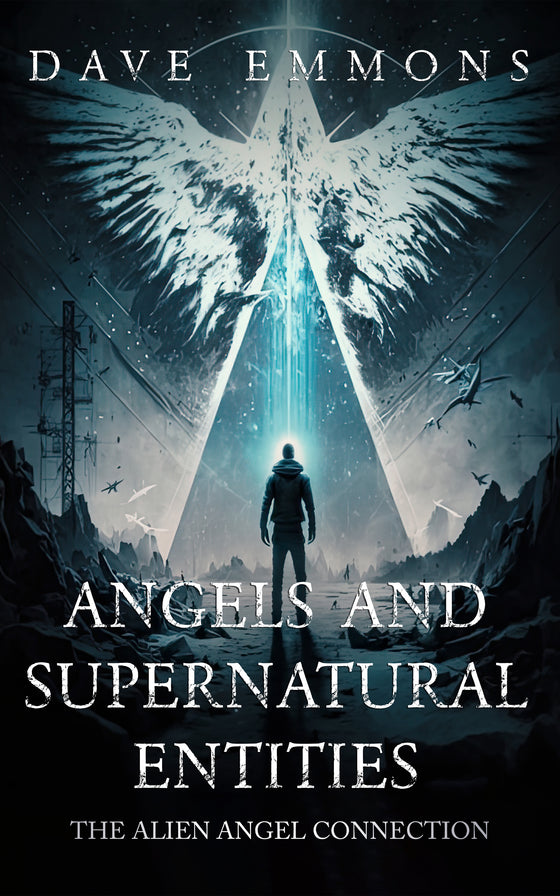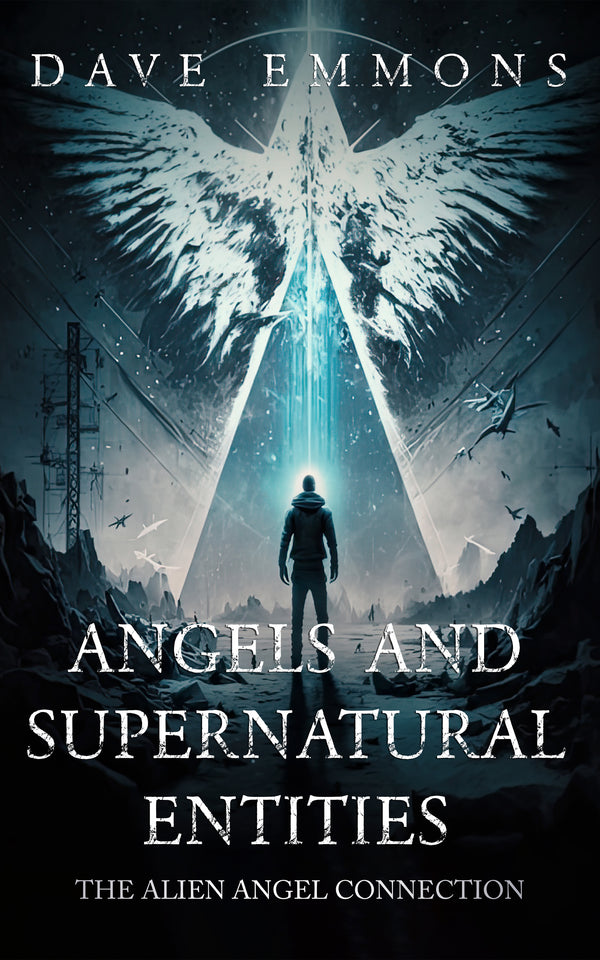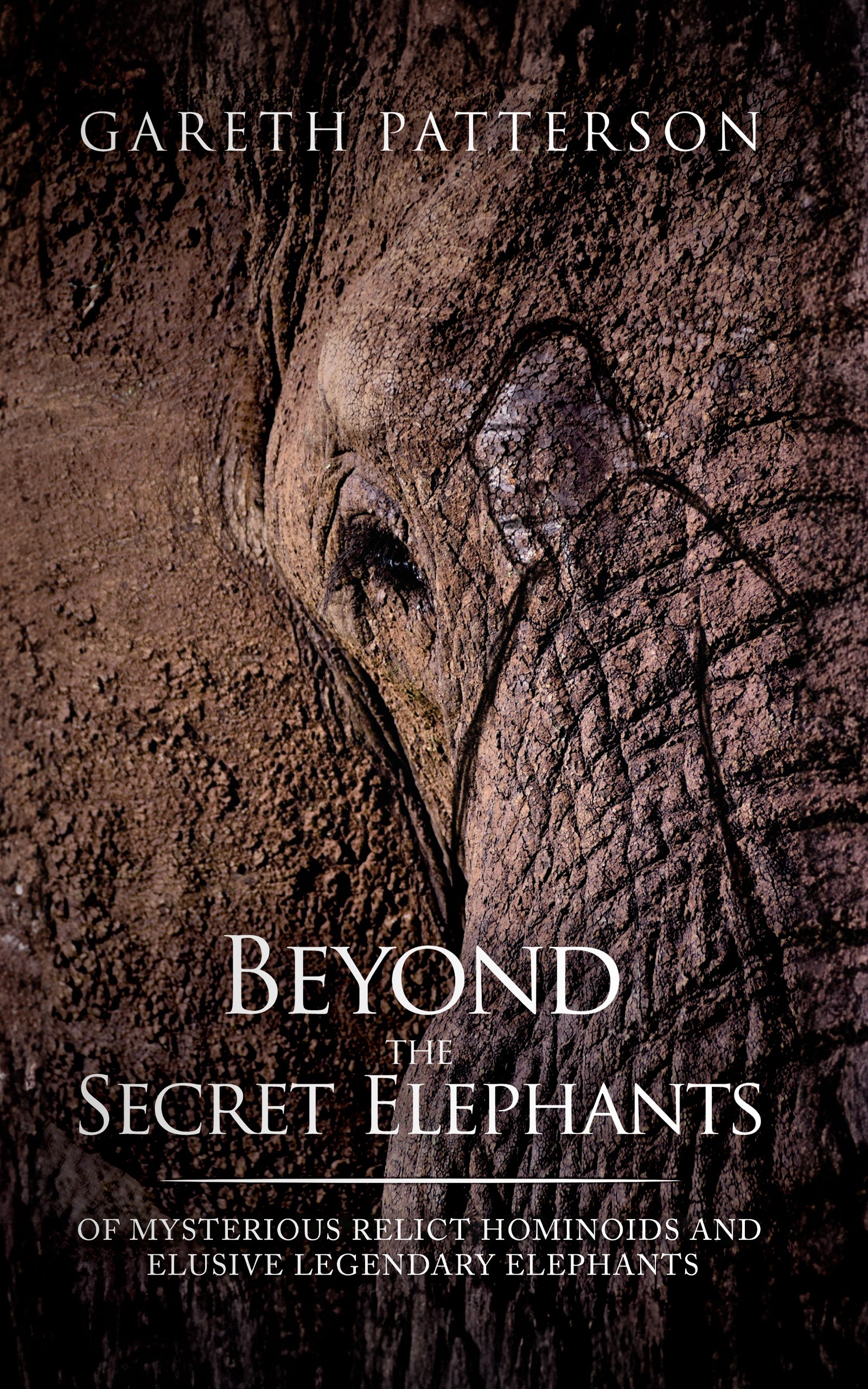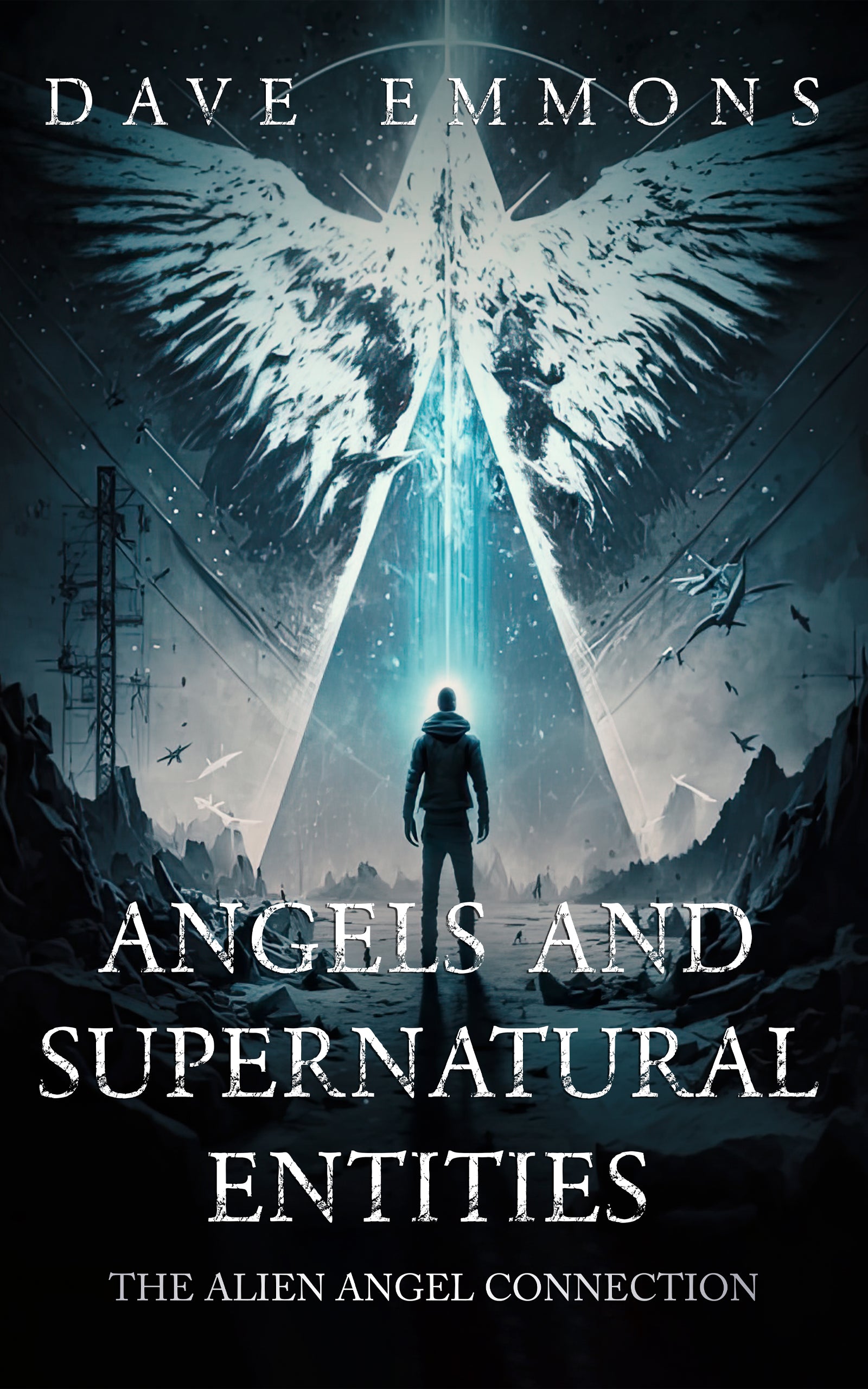Discover Ancient Astronaut Art

By Elaine Westfield, Ufologist
Have you ever stood before an ancient cave painting and wondered why our ancestors drew strange humanoid figures with what look like helmets or antennae? Or perhaps you've noticed peculiar disc-shaped objects hovering in Renaissance religious paintings and questioned what inspired these artists to include such unusual elements? Welcome to the fascinating realm of "Ancient Astronaut Art" – artwork spanning thousands of years that some interpret as visual evidence of extraterrestrial contact with our ancestors.
This isn't just about unusual images painted on stone or canvas. These artifacts represent what ancient astronaut theorists believe to be a visual record of humanity's interaction with beings from beyond our world – encounters so profound they were immortalized in the art of nearly every ancient civilization.
From Aboriginal rock paintings in Australia to petroglyphs in the American Southwest, from Mesopotamian figurines to Renaissance masterpieces, we'll examine the most compelling examples of what some consider evidence of ancient extraterrestrial visitation. While mainstream archaeology and art history offer conventional explanations for these curious images, the sheer volume and similarity of these representations across disconnected cultures has fueled alternative interpretations that continue to captivate our imagination.
Rock Art: Messages From Our Ancestors
Rock art represents our oldest form of visual communication – a direct window into the perceptions and experiences of our distant forebears. Why did early humans, with limited resources and constant survival pressures, dedicate such effort to recording certain images on stone? What did they find so important to document for future generations?
The Wandjina Figures of Australia: Sky Gods in White
In the rugged Kimberly region of Northwestern Australia, dozens of caves contain striking paintings of mysterious figures called the Wandjina. With their distinctive large white faces, enormous black eyes, and curious absence of mouths, these imposing figures are central to Aboriginal creation myths dating back thousands of years.
"The Aboriginals have all kinds of ancient stories of Wandjina figures of great heroes and sky gods who manipulated the continent, created the rivers and mountains, fought amongst each other, and then left," explains one researcher in the field. These stories have been carefully preserved through rock art, songs, dances, and oral tradition specifically to ensure the knowledge imparted by these visitors would never be forgotten.
What makes the Wandjina particularly compelling to ancient astronaut theorists is their uncanny resemblance to the "gray aliens" of modern UFO reports. The large eyes, minimalist facial features, and glowing appearance suggest to some that Aboriginal people weren't painting spiritual abstractions but actual beings they encountered – visitors who shaped their world and consciousness before departing.
A tribal elder noted, "We have stories of people who went to the stars, and it is possible that the Wandjina figures are representations of these sky gods or extraterrestrials." For ancient astronaut theorists, these aren't mere mythological figures but "actual physical representations of what the First Nation people of Australia actually witnessed."
American Southwest: The Star People's Canvas
Nine Mile Canyon in Eastern Utah, often described as "the world's longest art gallery," contains thousands of petroglyphs that have become central to ancient astronaut theories. Among these, the "Family Panel" depicts what some describe as "luminous humanoid type beings that appear to have space suits on, a helmet, even antenna."
Just 70 miles south in Sego Canyon, similar figures appear to float in the sky, clad in what observers interpret as helmets and unusual garments. These images align with the Native traditions of the Navajo, Fremont, and Ute peoples, who speak of "star people" or visitors who descended from the sky to impart knowledge.
"All Native American tribes have these traditional oral histories that people came from the stars to visit them," explains one researcher. "It's universal across the United States that these Gods, as we call them today, came to Earth and visited to provide knowledge."
Perhaps the most striking example is the "Ghost Panel" in Horseshoe Canyon, Utah. Here, a central figure known as the "Holy Ghost" stands over seven feet tall, depicted with a helmet-like head and surrounded by other strange figures. The panel contains a peculiar detail not found in other prehistoric art – what appears to be a technological device on the side of the central figure's head.
"The Navajo refer to themselves as descendants of the Holy people and that these holy people in fact help them emerge after a cataclysm," notes one expert. Interestingly, Native Americans traditionally called this site "the panel of the star people," suggesting these weren't ordinary beings but visitors from the sky.
Global Patterns in Stone
The phenomenon extends far beyond North America and Australia. In the Sahara Desert's Tassili n'Ajjer region, thousands of rock paintings include bizarre depictions of what appear to be figures in space suits, visors, and helmets, eerily resembling modern astronauts. These connect to the legends of the nearby Dogon tribe, who claim "fish gods called the Nommo" arrived in "huge ships from the sky" and guided their ancestors.
In Europe, at Val Camonica, Italy, a UNESCO World Heritage site reveals rock carvings of what some interpret as a "spaceman" with a glowing helmet. This figure is often found near a mysterious symbol called the "communion rose" – a flower-like shape with nine dots that some suggest depicts the vessel that brought these helmeted figures.
"Look at that," remarks a researcher examining the carvings, "that looks like a spaceship. It's like you'd look up in the sky and you would see this kind of twirling spinning ship in the sky."
What's particularly fascinating is that some of these carvings were hidden in secretive locations where few could access them, suggesting they weren't public art but perhaps reserved for initiates being taught about extraterrestrial encounters.
If we step back and examine rock art globally, a pattern emerges that ancient astronaut theorists find compelling – similar strange humanoids, often with features resembling protective gear, appearing across cultures that had no contact with each other, and consistently associated with stories of knowledge-bearing beings from the sky.
Figurines and Sculptures: Alien Forms in Three Dimensions
While rock art shows us how ancient people depicted mysterious visitors in two dimensions, figurines and sculptures add another layer. These three-dimensional objects required even more time and skill to create, suggesting the importance of what they represented.
Space-Suited Figures Across Continents
From Ecuador to Kiev, archaeologists have discovered ancient figurines that bear striking resemblances to modern astronauts. A strange suited figure found in Kiev dating to approximately 4,000 BCE shows what some interpret as a being in protective gear. Similar figures have been found in South America, leading ancient astronaut theorists to suggest these aren't coincidental similarities but representations of the same type of visitors worldwide.
The Lizard People of Ancient Iraq
Among the most intriguing figurines are those from the Ubaid culture of Mesopotamia. Dating to the 5th millennium BCE, these clay figures display elongated skulls and distinctly non-human features often described as "lizard-headed."
While archaeologists typically interpret their painted dots and lines as tattoos or scarification, and question whether their unusual skull shapes represent actual head-binding practices, ancient astronaut theorists offer a more literal interpretation – that these figurines depict reptilian extraterrestrial beings who interacted with early Mesopotamians.
This connects to later Sumerian tales of the Anunnaki, beings who allegedly came from the stars to create and guide humanity – a narrative central to many ancient astronaut theories.
Other examples proliferate across the archaeological record: the mysterious Nomoli figures left by an unknown culture; Japan's Dogu figurines with their oversized goggle-eyes that "defy scholarly explanation"; and 4,000-year-old figurines discovered on an Italian island depicting what some call "Ancient Aliens Or Giants."
For ancient astronaut theorists, these objects represent tangible evidence that our ancestors weren't just imagining fantastical beings – they were recording their encounters with visitors who looked decidedly non-human.
Ancient Illustrations: Recording the Impossible
Beyond prehistoric art, ancient and medieval illustrations provide another category of potential evidence for extraterrestrial visitation.
The Lolladoff Plate: A 12,000-Year-Old UFO?
One of the most compelling pieces is the Lolladoff Plate, a 12,000-year-old stone dish discovered in Nepal. This artifact reportedly depicts a hovering disc-shaped object alongside a small being resembling a modern "gray alien." If accurate, this would represent one of the oldest known depictions of both a UFO and an extraterrestrial entity on a single object.
Ancient Flying Machines and Cosmic Knowledge
A Chinese illustration from around 1400 AD tells of people from "Ji Gung Land" who created "flying cars that travelled far with a suitable wind." The accompanying narrative claims these people flew to China around 1700 BCE in these vehicles. Though from a fictional source, ancient astronaut theorists consider this a potential historical account of advanced aerial technology in ancient times.
Similarly, a relief discovered in 1957 in a Japanese labyrinth shows figures in "strange clothes which looked like astronaut suits" with "hose-like objects attached." The same site contained a painting resembling our solar system, with ten planets and a line connecting the third and fourth planets. This precision about our cosmic neighborhood, ancient astronaut theorists suggest, implies knowledge that could only have come from beings with a broader view of our solar system.
Historical UFO Illustrations
From Japan to Germany, historical illustrations document what appear to be aerial phenomena that defy conventional explanation. A Japanese drawing depicts a "burning wheel" seen in the sky in 900 AD. Dutch ships in the North Sea recorded seeing an object comprised of "two disks of different size." A 1697 illustration shows "two glowing wheels" observed over Hamburg, Germany.
One particularly striking example comes from Nuremberg, Germany in 1561. A broadsheet with woodcut illustrations documents a mass sighting of "globes," "crosses," and "blood-red" objects engaged in what appeared to be an aerial battle at dawn. The detailed account includes descriptions of objects that "became fatigued" and fell to earth "as if they all burned."
These historical illustrations, often published in official documents or newspapers of their day, suggest to ancient astronaut theorists that unexplained aerial phenomena have been witnessed and recorded throughout human history.
Divine Light or Alien Technology? UFOs in Religious Art
Perhaps the most controversial category of ancient astronaut art appears in religious paintings, where elements traditionally interpreted as divine manifestations are reinterpreted as extraterrestrial technology.
The Baptism of Christ and Celestial Observers
Numerous paintings depicting the baptism of Christ include curious celestial objects. A 1710 work by Flemish artist Aert De Gelder shows what appears to be a classic, hovering, disc-shaped object shining beams of light down onto the scene. Similar elements appear in baptismal scenes by Rogier van der Weyden, Ottavio Vannini, and Fra Angelico.
"What could have inspired the artist to combine these two subjects?" asks one researcher, suggesting the inclusion wasn't purely symbolic but perhaps based on accounts of unusual aerial phenomena witnessed during sacred events.
Crucifixion With Witnesses
A 17th-century fresco in Georgia's Svetishoveli Cathedral shows the crucifixion flanked by what some interpret as two disc-shaped craft. A 1350 painting at Kosovo's Visoki Decani Monastery depicts small human-like figures in what appear to be vehicles decorated with stars, reminiscent of modern aircraft insignia.
The Glorification of the Satellite?
Bonaventura Salimbeni's 1600 painting "The Glorification of the Eucharist" features an object between God and Christ that bears an uncanny resemblance to the Soviet Sputnik satellite – despite being created more than 350 years before Sputnik launched. While traditional interpretations view it as a celestial globe or orb of creation, ancient astronaut theorists suggest it depicts advanced technology shown to the artist through vision or encounter.
Madonna With UFO
Domenico Ghirlandaio's 15th-century "Madonna with Saint Giovannino" is so famous for its unusual aerial object that it's colloquially called "Madonna dell'UFO." Above Mary's shoulder floats a disc-shaped object, and in the background, a man shields his eyes while looking up at it, with his dog also gazing skyward. These details – particularly the human and animal reactions to the object – suggest to some that the artist was depicting an actual aerial phenomenon rather than a symbolic element.
In Carlo Crivelli's 1486 painting "The Annunciation with Saint Emidius," a beam of light descends from a circular formation in the sky to Mary's head. Ancient astronaut theorists draw parallels between this imagery and modern abduction accounts, even proposing the controversial theory that the Annunciation represents a form of extraterrestrial intervention.
"It's as if the painter is trying to depict some divine messenger," notes one observer, "and those depictions apparently are of UFOs. And here we have the Renaissance painters basically bringing us Jesus and a UFO together in the same painting."
While art historians attribute these elements to established religious symbolism representing divine light or celestial manifestations, ancient astronaut theorists suggest artists may have incorporated actual observed phenomena into religious contexts, as this would have been the only framework available to them for understanding such experiences.
Leonardo da Vinci: Genius Beyond His Time
Few historical figures captivate ancient astronaut theorists more than Leonardo da Vinci, whose work transcended the boundaries of what seemed possible in the 15th century.
The Mystery of Leonardo's Inventions
Leonardo conceived of helicopters, airplanes, submarines, tanks, and even robots centuries before technology would make them possible. His designs were so advanced that many couldn't be constructed during his lifetime because "they didn't have the technology." This remarkable foresight raises questions about the source of his inspiration.
"If we had developed the various ideas, concepts, and scientific discoveries of Leonardo da Vinci," suggests one researcher, "there is an argument to be made that we possibly could have landed somebody on the moon in about the 1800s."
The Hidden Message of the Disappearing Angel
In 1989, experts examining "The Annunciation" discovered something strange – when subjected to X-rays, the angel Leonardo painted became invisible, unlike the rest of the painting. This occurred because Leonardo used non-lead-based paint while his mentor used lead-based pigments.
Some theorists suggest this wasn't coincidental but deliberate – a hidden message encoded by an artist "notorious for hiding things inside his own paintings." The theory proposes that Leonardo, like the angel Gabriel, saw himself as a messenger bringing critical knowledge to humanity, perhaps at the behest of extraterrestrial guides.
The Cave and the Missing Years
From 1476 to 1478, Leonardo da Vinci vanishes from historical records. This coincides with a personal anecdote he wrote about encountering a mysterious cave that both terrified and fascinated him. Some ancient astronaut theorists propose an extraordinary explanation: that Leonardo discovered a portal or stargate that allowed him to travel through time or space.
"He goes inside the cave, then he disappears," notes one proponent. "It suggests to me time travel, portals. He's opening portals or stargates and beaming to either the past or the future, and then returning to the present time."
This hypothetical journey could explain how Leonardo designed machines centuries ahead of their time – perhaps he actually saw them in the future before returning to document them.
The Grotesque Heads: Alien Encounters?
Leonardo's drawings of "grotesque heads" featuring misshapen faces, elongated skulls, and flattened features present another puzzle. For an artist renowned for accurate, realistic depiction, these bizarre figures raise questions. "What in the world was he looking at?" asks one researcher. "Did he actually encounter creatures that looked like this?"
Universal Genius or Extraterrestrial Messenger?
The ancient astronaut perspective frames Leonardo not just as a brilliant mind, but potentially as someone chosen by extraterrestrial beings to accelerate human advancement.
"Wherever we look in ancient times, we find that the genius was always identified with superhero defined qualities," explains one theorist. "Whenever you look into mythology, you will also find that the geniuses were the ones who were created by the gods. Genius and divine go hand in hand."
Was Leonardo serving as an unwitting messenger for an extraterrestrial intelligence? Or could his exceptional intellect itself have been the product of alien intervention or genetic heritage? For ancient astronaut theorists, these questions remain open and compelling.
Beyond the Canvas: Other Curious Artifacts
Beyond the major categories, several other types of artifacts enter the ancient astronaut discussion.
A French coin minted in 1680 depicts what appears to be a hovering disc with port holes or lights around its outer rim. As an official government-produced item, ancient astronaut theorists view this as particularly significant – not artistic license but official documentation of an observed phenomenon.
Woodcuts from 1479 Arabia show what some interpret as a rocket ship "complete with rivet and metal and pointed front with stars gleaming in the background." Another from 1561 Nuremberg depicts multiple aerial objects of different shapes engaged in what witnesses apparently perceived as a battle in the sky.
Mesopotamian reliefs become especially significant in ancient astronaut narratives connecting to the Anunnaki – beings described in Sumerian texts who supposedly came from the stars to create and guide humanity. These carvings, ancient astronaut theorists suggest, provide visual confirmation of the textual accounts.
A Different Lens: Critical Perspectives
The ancient astronaut interpretation of historical art has garnered substantial criticism from mainstream academics across multiple disciplines.
Archaeologists and art historians point out that these interpretations often ignore cultural context and established symbolic meanings. The strange figures in rock art may represent shamanic visions or spiritual beings within that culture's cosmology. Religious paintings follow established iconographic traditions where certain symbols consistently represent specific theological concepts.
Some critics raise concerns about potential racial implications, arguing that attributing magnificent achievements like the pyramids, Easter Island moai, or Native American mounds to alien intervention effectively dismisses the ingenuity, skill, and capabilities of non-European civilizations. This critique notes that European monuments like Stonehenge occasionally enter ancient astronaut narratives, but sites built by indigenous peoples receive disproportionate attention.
"That's what the ancient aliens theory does: it discredits the origins of civilizations, and almost entirely of non-white civilizations," notes one critic. "People may suggest Stonehenge was built by aliens – but do they suggest the Roman Forum or Parthenon were? No."
However, some indigenous writers have recently pushed back against this criticism, suggesting that denying possible extraterrestrial connections actually dismisses authentic indigenous traditions. Dakota/Lakota Sioux writer Ruth H. Burns argues that many indigenous peoples trace their ancestry to "star-people" and that dismissing such accounts represents another form of cultural erasure.
Skeptics also highlight the lack of archaeological evidence – despite thousands of excavations worldwide, no indisputable alien artifacts have been recovered from ancient contexts. The images alone, they argue, don't constitute proof when more conventional explanations exist.
Psychologically, Carl Jung viewed UFO imagery not as evidence of literal visitations but as manifestations of archetypes from the collective unconscious. He suggested these recurring symbols serve psychological functions, representing an "unknown dimension" of human experience rather than external entities.
Why Ancient Astronaut Art Matters
Whether one accepts or rejects the extraterrestrial interpretation, these artworks remain fascinating windows into human perception, creativity, and our eternal quest to understand the cosmos.
They reveal how ancient peoples conceptualized the unknown and the powerful, documenting phenomena they found significant enough to preserve for future generations. In many cases, these images connect to creation stories and cultural origin points, suggesting they represented pivotal moments in each society's understanding of itself.
The enduring mystery of certain artifacts challenges us to remain open to multiple interpretations. While conventional explanations may satisfy many questions, some elements continue to resist definitive explanation.
Perhaps most significantly, these images demonstrate humanity's consistent fascination with the possibility that we are not alone. From prehistoric cave paintings to Renaissance masterpieces, artists have looked to the skies and imagined – or perhaps witnessed – something beyond ordinary experience.
In our modern era, where the question of extraterrestrial life has moved from mythology to scientific inquiry, these ancient images take on renewed significance. They remind us that the search for understanding our place in the cosmos is not just a modern pursuit but a fundamental human quest that spans our entire history.
Whether these artworks document actual alien encounters or express universal human imagination, they continue to spark wonder and debate. In that sense, they fulfill their creators' apparent intention – to communicate across vast stretches of time, connecting us to our ancestors through shared questions about the mysterious beings who might have visited from the stars.
From Bigfoot to UFOs: Hangar 1 Publishing Has You Covered!
Explore Untold Stories: Venture into the world of UFOs, cryptids, Bigfoot, and beyond. Every story is a journey into the extraordinary.
Immersive Book Technology: Experience real videos, sights, and sounds within our books. Its not just reading; its an adventure.





